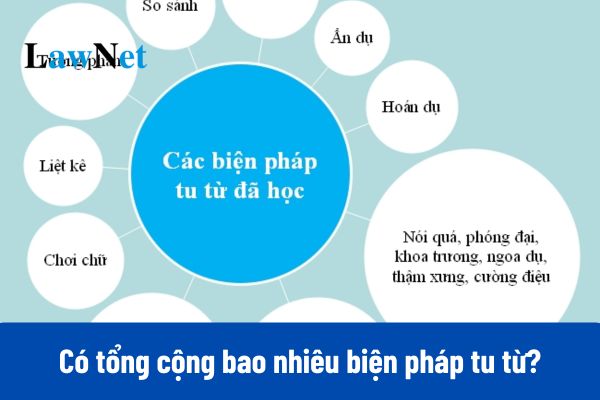How many rhetorical devices will 6th-grade students in Vietnam learn in the Literature curriculum?
How many rhetorical devices will 6th-grade students in Vietnam learn in the Literature curriculum?
Under sub-section 2, section 5 of the general education program for Literature, issued with Circular 32/2018/TT-BGDDT, the 6th-grade Literature curriculum covers the following Vietnamese language knowledge:
- Simple and compound words, compound words and reduplicative words
- Polysemous words and homonyms
- The meanings of some common idioms
- The meanings of some common Sino-Vietnamese elements (e.g., "bất", "phi") and the meanings of words containing those elements (e.g., "bất công", "bất đồng", "phi nghĩa", "phi lí")
- The main components of a sentence: expanding the main components of a sentence using phrases
- Adverbial phrases: characteristics, functions in linking sentences
- The use of semicolons (marking the boundaries between parts in a complex list); quotation marks (marking the understanding of a word not in the usual sense)
- Rhetorical devices metaphor, metonymy: characteristics and effects
- Paragraphs and texts: characteristics and functions
- Choosing vocabulary and some sentence structures appropriate for expressing the meaning of a text
- Types of texts and genres
+ Narrative texts: a story recounting a personal experience, a story retelling a folk tale
+ Descriptive texts: a composition describing a living scene
+ Sentimental texts: six-eight poetry; paragraphs capturing emotions when reading six-eight poems
+ Argumentative texts: opinions, reasoning, evidence; presentations of opinions about a phenomenon in learning, life
+ Informative texts: titles, bylines, headings, bold letters, numbering, and bullet points; explanatory texts recounting an event; meeting or discussion minutes
- Language development: phenomena of borrowing words, borrowed words, use of borrowed words
- Non-verbal communication tools: images, figures
Thus, there are a total of 2 rhetorical devices that 6th-grade students are taught in the Literature curriculum, including the rhetorical devices of metaphor and metonymy.

How many rhetorical devices will 6th-grade students in Vietnam learn in the Literature curriculum? (Image from the Internet)
What are examples of rhetorical devices in the 6th-grade Literature curriculum in Vietnam? How to distinguish these rhetorical devices?
(1) Metaphor (Implied comparison, based on similarity)
Example 1: "Tomorrow is starting today." (Excerpt from To Huu's poem)
"Tomorrow" is a metaphor for the future, "today" is a metaphor for the present, reflecting the idea that today's actions determine tomorrow.
Example 2: "Our hands can create everything." (Excerpt from Hoang Trung Thong's poem)
"Our hands" is a metaphor for human labor, indicating that people can achieve everything through their efforts.
Example 3: “That branch of flowers belongs to no one alone”
"Branch of flowers" is a metaphor for a beautiful girl, implying that she belongs to no one in particular.
Example 4: "The boat and the shore of happiness."
"Boat" is a metaphor for the one departing, "shore" is a metaphor for the destination or the one staying, symbolizing attachment and waiting in love.
(2) Metonymy (Using a part or characteristic to refer to the whole object)
Example 1: "The indigo shirt marks the parting moment" (To Huu)
"Indigo shirt" is a metonymy referring to the people of Viet Bac (as they often wore indigo shirts).
Example 2: "My whole village joins the revolution."
"Whole village" is a metonymy referring to all the villagers, but in reality, it means the majority of villagers joined the revolution.
Example 3: “That white shirt just entered the class.”
"White shirt" is a metonymy referring to a student, as students typically wear white uniforms.
Example 4: “The whole city rejoices in victory.”
"Whole city" is a metonymy referring to all the people in the city, not the city itself physically.
(3) Distinguishing between metaphor and metonymy
Metaphor: Based on the similarity between two objects or phenomena. Implied comparison.
Metonymy: Based on a close, related relationship between two objects or phenomena. No comparison is made.
What literary knowledge does the 6th-grade Literature curriculum in Vietnam cover?
Under sub-section 2, section 5 of the general education program for Literature, issued with Circular 32/2018/TT-BGDDT, the 6th-grade Literature curriculum in Vietnam covers the following literary knowledge:
- The expressiveness of literary texts
- Details and the connections between details in a literary text
- The subject matter, theme of the text; the writer's feelings and emotions
- Elements: plot, characters, narrator's voice, and characters' voice in legends, fairy tales, fables
- First-person narrator and third-person narrator
- Formal elements of six-eight poetry: number of syllables, lines, rhymes, rhythm
- Title, lines, verses, rhymes, rhythm, language, and the effects of these elements in a poem
- Narrative and descriptive elements in poetry
- Recording forms, narrative style, first-person narrator in memoirs or travelogues
Additionally, the text corpus used in the 6th-grade Literature curriculum include:
(1) Literary texts
- Legends, fairy tales, fables, short stories
- Poetry, six-eight poetry
- Memoirs or travelogues
(2) Argumentative texts
- Social arguments
- Literary arguments
(3) Informative texts
- Texts recounting an event
- Meeting minutes
- Content summary diagrams

